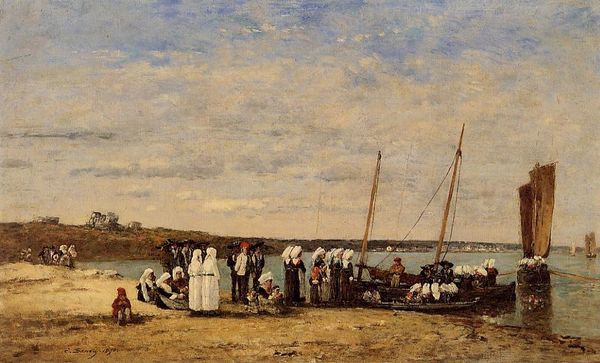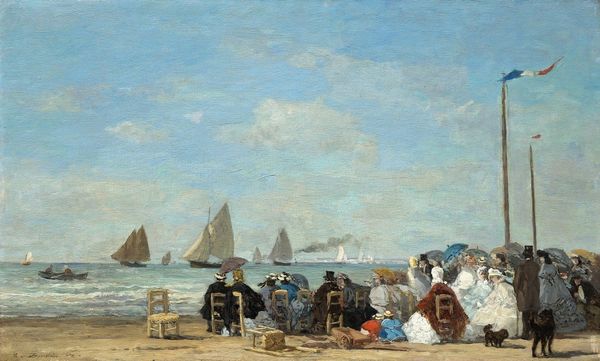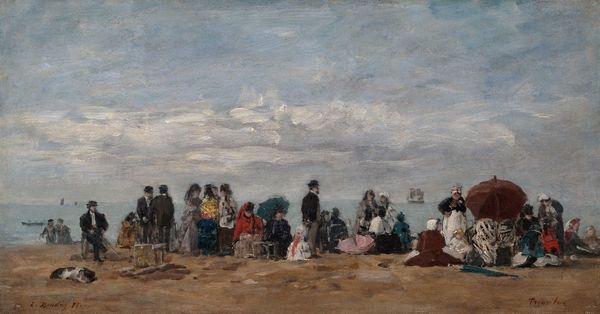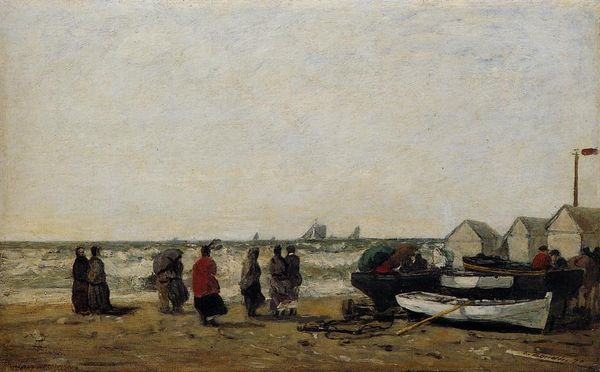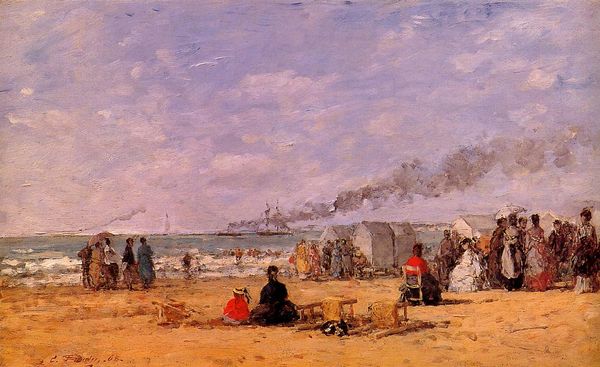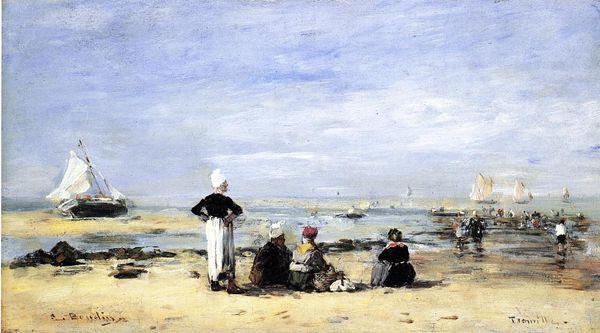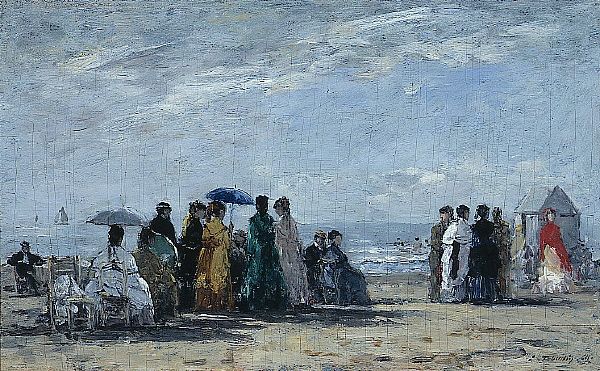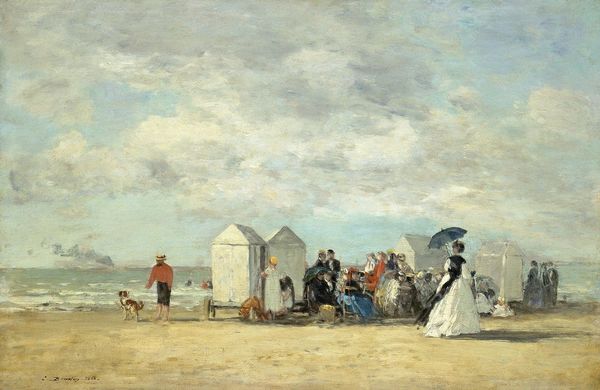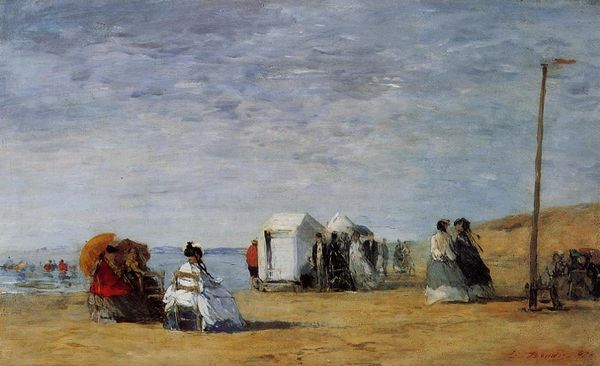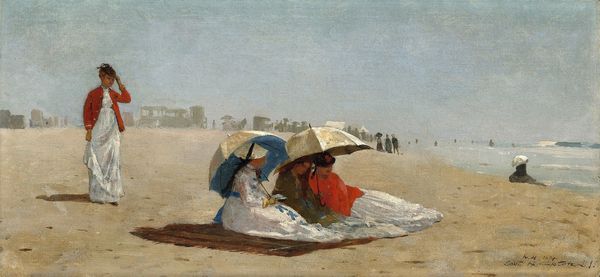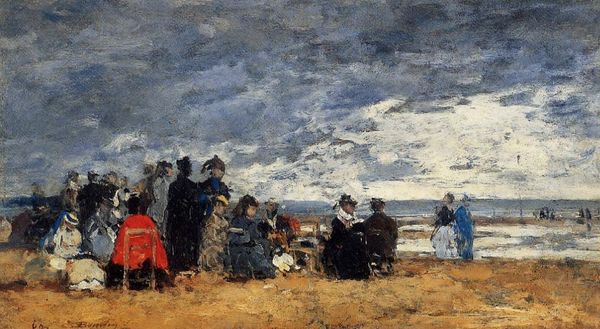
plein-air, oil-paint
#
impressionism
#
plein-air
#
oil-paint
#
landscape
#
figuration
#
oil painting
#
genre-painting
Copyright: Public Domain: Artvee
Curator: What a captivating scene! Eugène Boudin's "On the Beach, Dieppe," painted in 1864, offers a glimpse into leisure and social dynamics along the French coast. The figures, the sky, the light...it's all quite beautiful! Editor: The somber color palette and figures turned away from the viewer gives this painting an overwhelming feeling of detachment. I'm immediately curious about their internal experience of leisure within the framework of societal expectation. Curator: Yes, that's certainly part of it. Boudin, known as a forerunner of Impressionism, truly captures the subtleties of light and atmosphere. Note how the broad, open sky dominates much of the composition. Skies themselves have, historically, acted as representations of emotional tenor. Do you agree? Editor: Absolutely. The hazy, almost melancholic sky could symbolize societal constraints placed upon these figures. It brings questions to my mind about gender roles in 19th century, with women often confined to prescribed behaviors and dress even in settings meant for relaxation. Curator: That's a keen observation. The figures, mostly women in their elaborate dresses and bonnets, seem almost suspended between the natural world and the strictures of society. The small dog adds a curious sense of levity to this otherwise heavy situation. Do you read the scene in a similar light? Editor: The dog disrupts any illusion of homogenous social unity and order. Here we are in Dieppe, during the Second Empire when rapid industrialization fostered an emerging upper-middle class who had the means to partake in leisure activities like this one; however, unspoken rules were imposed on anyone engaging in these so-called pleasurable moments. Curator: It's true, Boudin masterfully documents a moment in time while layering nuanced undertones of social critique. It all boils down to his masterful and deliberate use of symbolism and imagery in this instance. It is quite profound. Editor: Considering the complex history surrounding class and leisure, particularly as it pertains to marginalized identities, reassessing our current engagement with leisurely activities today seems crucial. It begs the question: How can we, and do we, approach relaxation, leisure, or pleasure through the lens of emancipation?
Comments
No comments
Be the first to comment and join the conversation on the ultimate creative platform.

